Menu
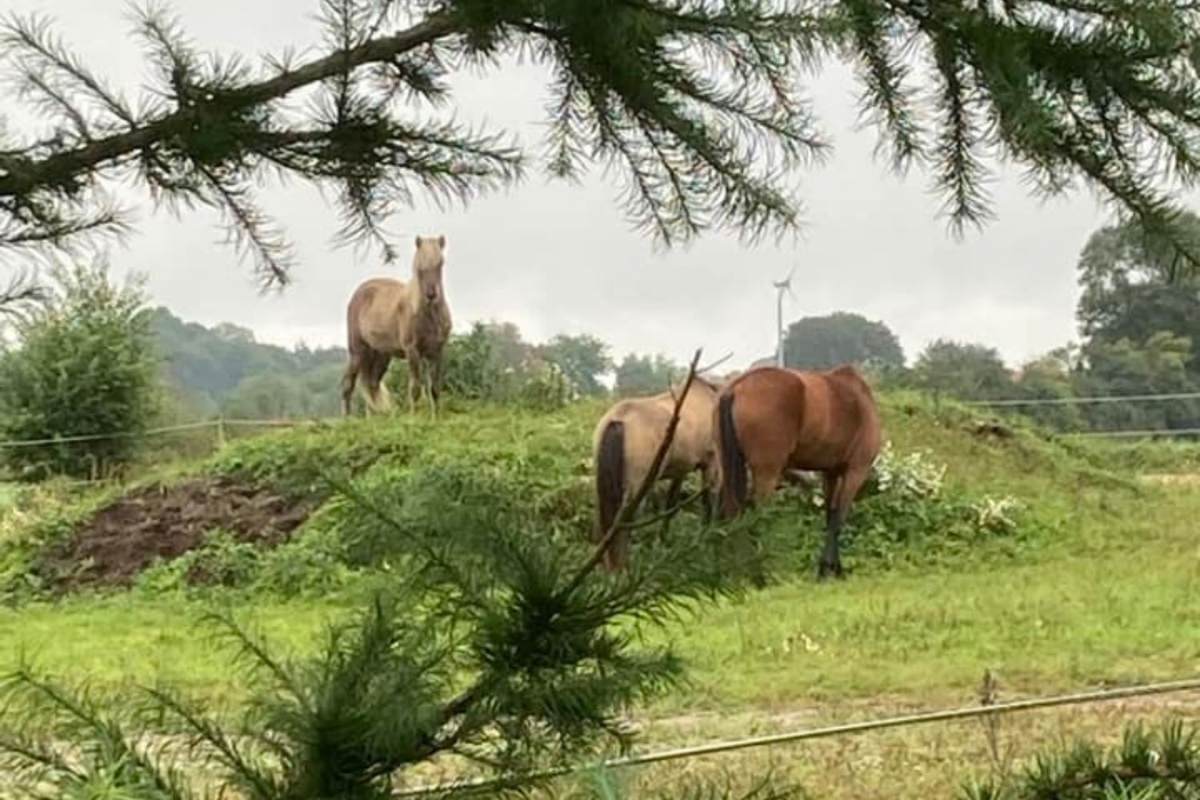
In Denmark, there's an increasing consensus that horses should have access to a paddock, and it's been part of their Horse Law from the beginning:
HORSES MUST BE EXERCISED OR ALLOWED FREE MOVEMENT IN THE PADDOCK FOR AT LEAST 2 HOURS, 5 DAYS A WEEK.
Horsekeeping Act, §17
Horses are different. Just like how we use horses and the opportunities for stabling and paddocks vary. Therefore, the law is interpreted differently, from the horse which is ridden for about an hour and spends about an hour on a smaller paddock alone – essentially the minimum rule – to the horse which spends all 24 hours in loose housing with free access to the paddock.
Many horse pensions have made it their virtue to promote the motto "a real horse life with many hours in the paddock". Some of these also have high-quality paddocks where horses can engage in natural behaviour. This is a prerequisite for defining paddock time as a real horse life.
In this article, you can read about the needs of a horse, which can be met in a good paddock, as well as get three tips to enrich your paddock and thus contribute to the welfare of the horse:
• Provide the opportunity for movement in terrain
• Plant shrubs, trees, and various types of grass
• Install shelter and shaftless brushes
Read also: Portrait: World Champion Charlotte “Lottie” Fry
The needs of a horse are governed by innate instincts, which have developed over millions of years, and despite us having domesticated the horse and through breeding created many different horse breeds with different body structures and temperaments over the last 6000 years, we have only slightly modified the fundamental instincts. In relation to the theme of the article, there are especially three instincts and thus needs, which are relevant to examine more closely.
• Freedom of movement
• Food searching
• Social interaction with other horses
We see this when the foal is only a few minutes old, struggling to its feet to find the mare's udder to get the first, life-giving colostrum, and shortly thereafter it's tumbling around with the other foals in the herd. The horse is a prey animal, and therefore it's important for it to keep fit to escape predators. That's why horses move voluntarily, often without apparent good reason.
Moreover, there are many other benefits to movement in terms of strong muscles, bones and joints, as well as the play in the paddock training the horses' movement techniques and reaction speed.
There's obviously a difference between different types of horses, how often and how fast they move, but it's an essential requirement for our arrangement of the horse paddock that we give the horses the opportunity to pick up speed.
And it's not because the horse in the wild spends the whole day galloping around. Nevertheless, the horse is always in motion, and if the horse could choose, it would walk many kilometres a day – different distances have been measured, which wild horse herds have covered, often over 10 kilometres and more. On such a route, the horses pass many different types of areas with different terrains, soil types and plants, so in addition to the exercise on the journey, the horses are foraging on different types of food. The herd also has areas where they, for example, lie and sleep in a sandpile, bathe and drink in a stream, seek shelter from flies or rain and so on. The better you can imitate these elements in your horse paddock, the more you meet the horse's instinctive needs, and provide more welfare.
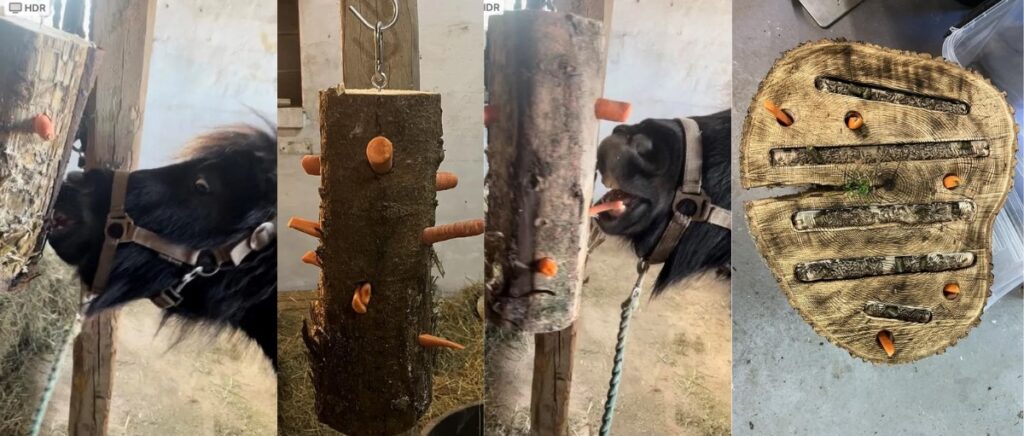
Read also: German show jumping and dressage Derby 2023 in Hamburg
Let's start with the plants that the horse eats. The horse is originally a "browser" (leaf-eater), and even though it has adapted to the grass environment of the steppes, our modern horses also seek leaves, twigs, bark, and more, thanks to some 40 million-year-old instincts from the forest horse.
When you get your farmer to sow the field where the horse pasture will be, the most effective way is obviously to fill a good grass mix in the seed drill and spread it out over the whole area. It also looks good with a nice, green, and well-kept grass field.
However, this is only a good idea if your field is to be used to cut grass for hay. If you are to have the horses graze there, different areas with different types of grass can better meet the horse's need for a varied diet. If you have thrifty horses, you can choose grasses with high structure and low sugar value, while with sport horses you can choose grasses with higher nutritional value. Stripes with different herbs also enhance the horses' experience of food seeking. There may be local conditions. Talk to a seed consultant who also knows about horses, about good plants in your area.
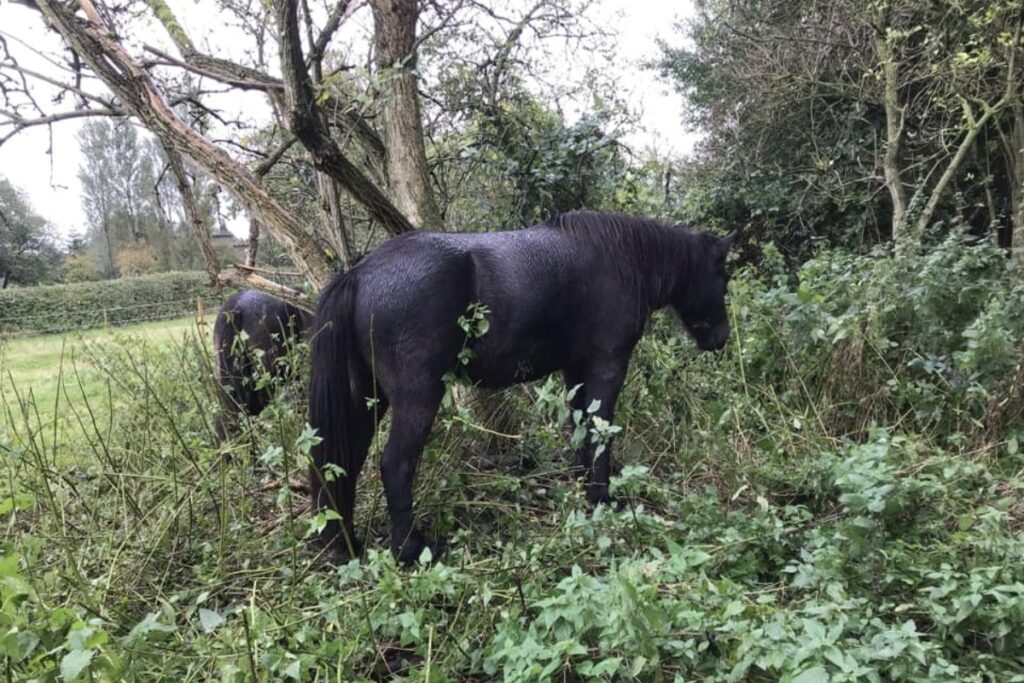
Remember, some weeds are useful, you just have to avoid and fight poisonous plants:
• Maple, yew and oak. If you can't cut them down, fence them off from the horse pasture.
• All forms of buttercups. They have to be pulled up by the roots. Help each other, then it's more fun.
• There may be other poisonous plants that can be a problem for you. Consult a plant-savvy consultant.
Some horses, especially certain thrifty breeds, do not move enough by themselves. Here you have to guide them by setting up fences, creating smaller pastures with paths in between, placing the water in one place (where it is easiest for you), and so on. With several smaller pastures, you can also regulate whether the amount of grass matches the horses' needs, so you can keep them in suitable condition over the summer. The beautiful white/brown fences you set up by the road, where the neighbors pass by. Inside your pastures, you set up fences that suit the horses, and guide them around the earth during the day.
Tree trunks, earth mounds, and concrete slabs are important furniture in the horse pasture. You can use them to divide paths or as obstacles that the horse has to lift its legs over. Concrete slabs are useful if you are struggling with mud, for example, at the joints. Mud is one of the annoying things in the horse pasture, but luckily there are many options for securing the ground so the horses can get around reasonably dry-footed.
Read also: Bulbs: How to care of the shock absorbers of a horse
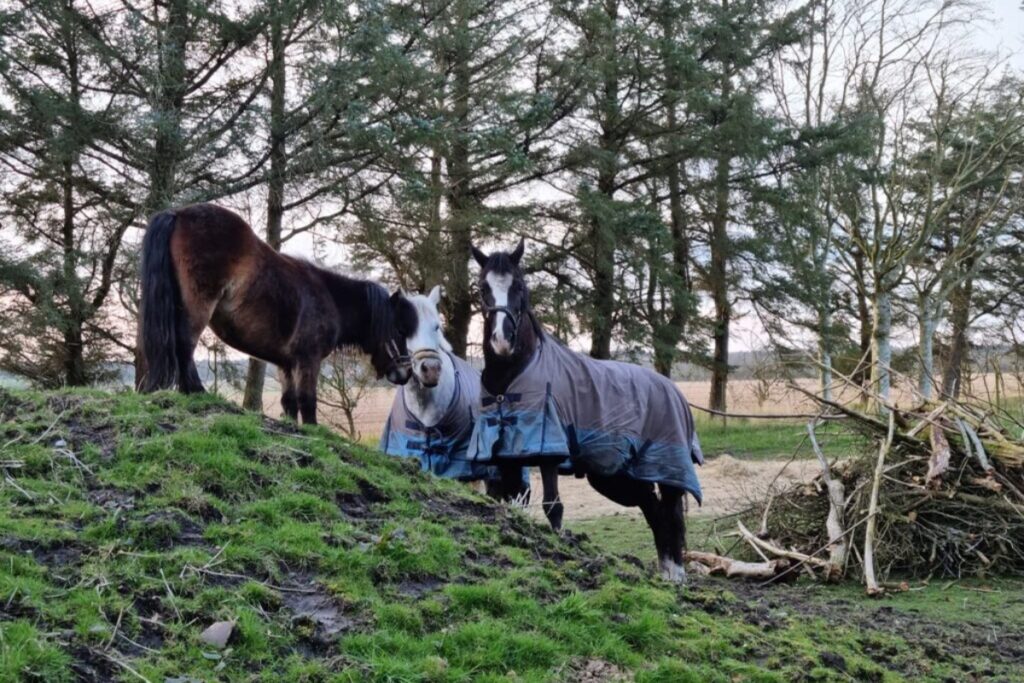
Are you getting a new riding arena surface? Then throw the old one out in the pasture in a large pile. Or keep an eye on whether any neighbors have excess soil from a construction project. It doesn't have to cost a fortune. Horses like to have an overview, a remnant from the steppes, where predators often lay in wait. When they can oversee the area, it provides peace in the herd and lowers stress levels. And then there are some youthful horses who love to play on the mounds.
MAKE IT EASY FOR YOU AND DIFFICULT FOR THE HORSE
Martha Voss, an equine agronomist:
I have seen quite a few roaming pastures and active pastures, etc., and many of them work very well for horses. People have set up feeding stations along the track, which then takes time to go around and refill, perhaps several times daily. And eventually, that can become tiring. When you decide to enrich your horse pastures, it's worth spending time drawing and discussing ideas with experienced people. Perhaps you could place all feeding stations close to your feed barn, and then simply set up fences, so the horses have to take a detour to go from one to another. It might be that you don't have time to go and move fences or open gates several times daily. Here, there are several useful types of timer gates on the market that you can set to open to the next pasture or track on the horse's route around the facility.
Insects are one of the biggest annoyances in the horse pasture, and not everyone has large open areas where horses can seek refuge from the winged pests. Up in the wind, it's hard for insects to keep balance, which gives horses an advantage, even though one might think it would be better with shade under the trees. Under the trees, there's often shelter from the wind, so there are the insects too. There are many "insect repellent" products on the market, and some of them also work. As long as the product still smells bad. Many fly masks and covers help the horses against the stinging pests, but if you have the opportunity, set up a shelter in the pasture. Ideally reasonably large and dark, as insects don't like it – they are attracted to the sun. With the shelter, you also solve the problem of too much sun in the warm months and water and mud in the rainy periods. Place the shelter so high that rainwater doesn't run into it, and so centrally that horses can access it from most pastures. And as close to the farm, so you can easily check the horses. An emergency solution is to take the horses into the stable for lunch when it gets too hot and the flies become too bothersome.
Horses are herd animals, and besides play and safety in the herd, horses spend a lot of time rubbing each other. Sweat cakes and insect bites itch, and you can increase horse comfort with a couple of old stable brushes without handles, which you screw onto the wall of the shelter or a sturdy pole that stands solidly in the ground.
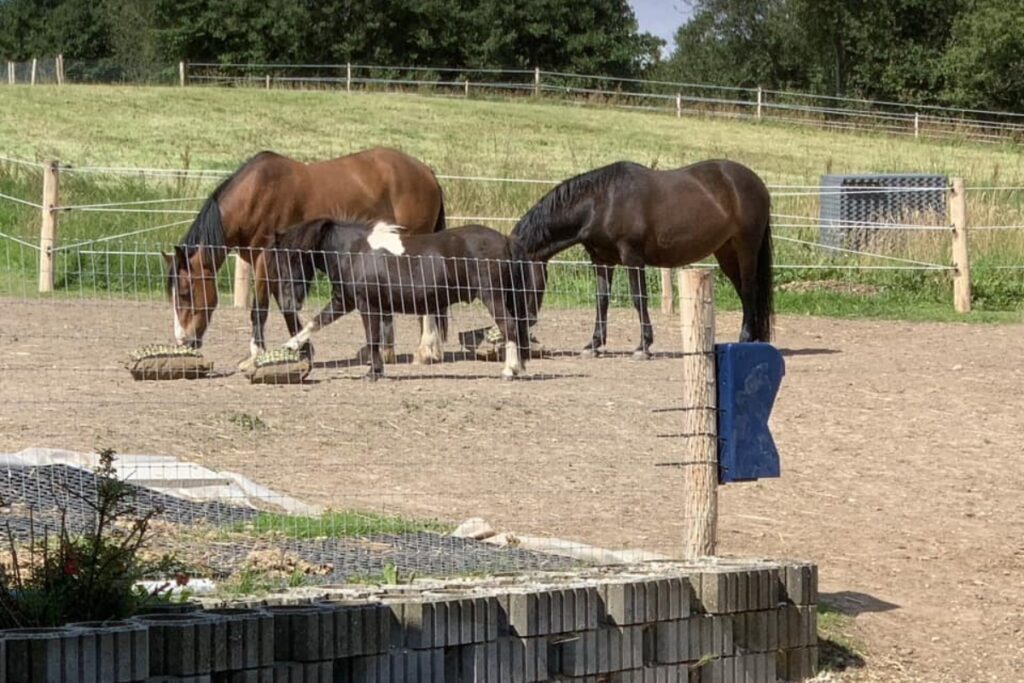
Spread feed in different types of slow feeders, so they have to work for their food.
Eva Søndergaard, Eric Clausen, Janne Winther Christensen & Hans Schougaard. Opstaldning og hold af heste. Danske anbefalinger. DJF Rapport nr. 39. Husdyrbrug. 2002. https://dcapub.au.dk/djfpublikation/index.asp?action=show&id=627
B. Perron, W. Bridges, A. Ali, M. Agurre, M. Burns, K. Vernon. 78 Effects of maneuvering required maintenance elements to monitor the grazing behaviors of horses. Journal of Equine Veterinary Science, vol 100, May 2021.